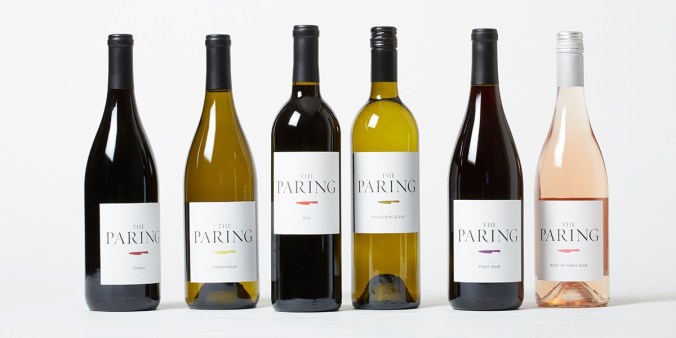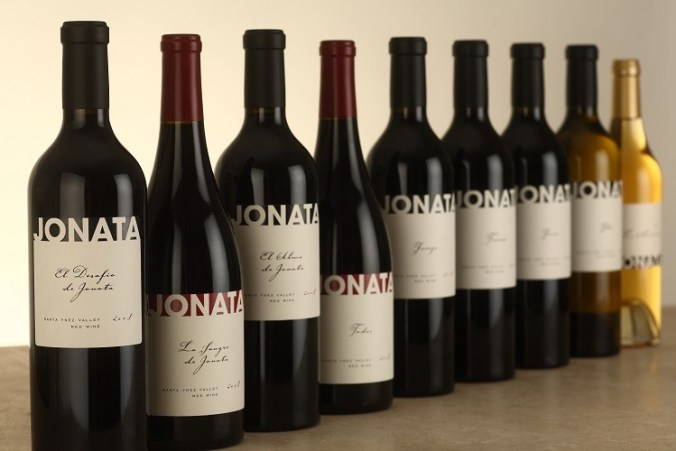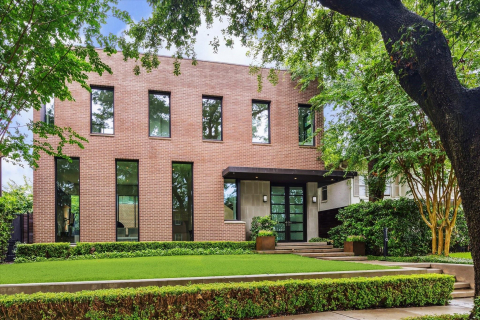Stan Kroenke’s Wine Guy — This Dirt Guru is Running Wild in Santa Barbara County
Talking Wine With Matt Dees
BY James Brock // 10.21.20
Matt Dees loves to experiment with Chardonnay.
I love to talk about wine with people who share my passion for it. We open bottles, we trade stories about travel and soil types, terroir and residual sugar, and we talk of taste and food and restaurants. We recommend wines to one another, we drink, and we learn a lot.
In Wine Talk, I introduce you to friends, acquaintances, and people I meet as I make my way around the world, individuals who love wine as much as I do, who live to taste, who farm and make wine. You’ll appreciate their insight, and I hope you’ll learn something from them as well.
What initially drew me to this winemaker was the way he talks about soil and rocks. I have read many interviews with (and stories about) Matt Dees, and immediately after finishing the first one I wanted to feature him in Wine Talk.
My journey with wine began in Germany, during high school, which I attended in the Pfalz. Riesling was my first companion, of course (it is still my favorite traveling mate wine-wise). Early on, I learned about and came to appreciate the qualities of slate and granite and limestone and greywacke (and many more types of soils and rocks) and how they affected and nurtured vines and imparted flavor and other characteristics. I became a lifelong amateur researcher in the field. So Dees appealed to me immediately. (And little did I know that he also likes Nina Simone, one of my favorite musicians.)
Dees, who studied plant and soil science at the University of Vermont, has been the winemaker for The Hilt and Jonata since 2004. And he loves to talk dirt, in all its forms.
In 2014, a 3,600-acre piece of land (the famed Rancho Salsipuedes) that includes two prime vineyards — Radian and Bentrock — became part of Dees’ Hilt playground, and his creativity and experimentation in Santa Barbara County have been running wild, much to my delight. I plan to store up as much of his wines as I can, because I know they are bottles I will enjoy drinking for the rest of my life.
Here is a little background on Dee’s three projects (all owned by Stan Kroenke, the billionaire owner of Screaming Eagle, the Los Angeles Rams and the Denver Nuggets, among other things):
— Jonata, located in Ballard Canyon in the Santa Ynez Valley. It produces around 5,000 cases a year, with recent bottle prices ranging from $185 for a 2015 El Alma de Jonata, $160 for the 2016 La Sangre de Jonata, and $80 for a 2015 Felix.
— The Hilt, based in the Sta. Rita Hills. It’s good for about 7,000 to 8,000 cases annually. Look for a 2016 Old Guard Chardonnay for $70, the ’16 Vanguard Chardonnay for $65, and the 2017 Vanguard Pinot Noir for $17.
— The Paring. This produces 15,000 to 16,000 cases per annum, wines “made from vineyard blocks that are either too young or don’t fit into the vintage style” of Jonata and The Hilt selections. Try the 2016 Sauvignon Blanc for $23, the 2015 Paring Red for $27, or the 2018 Rosé of Pinot Noir for 2018.. There’s something for all budgets here.

I recently had the pleasure of participating in a Zoom tasting with Dees and sampling three of his The Hilt Chardonnays — a 2017 Estate, the 2018 Radian Vineyard, and a 2012 Vanguard. It was a satisfying day, to say the least. The contents of the bottles were singing beautifully.
Dees, who was born in Kansas City, is as engaging live as he comes across in articles and interviews, and he’s someone I know I’d enjoying share a long meal with. (Note his food pairings below, and you’ll no doubt conclude he is a serious and thoughtful eater and drinker, my favorite type of person.)
Drinking these wines reaffirmed my enthusiasm for Sta. Rita Hills Chardonnay. Dees speaks of its “electric acidity,” and if you have not experienced it, do so as soon as you can. I look forward to meeting this gifted winemaker in person one day, but until then, here he is in Wine Talk.
James Brock: How has COVID-19 changed your work and life?
Matt Dees: In terms of my job, we’ve changed our approach as a winemaking team. We are wearing masks and keeping distance. We now have two teams with two different bathrooms, two different dining tables, two different coffee makers, etc. . .
In the vineyard, we are working in smaller teams and keeping them as far apart as possible. Beyond the day-to-day changes in routine, I’d have to say that I’ve had far more time to myself than I’m used to. I’ve never had so much time and space to myself in the vineyard. I’ve really been able to closely watch all the subtle changes in the vines over the growing season. I definitely have a more intimate understanding of our property and our vines after this time alone.
In the cellar, I’ve become my own worst enemy with all this newfound space and alone time. I’ve been tasting our wines so much more these past few months. I’ve never spent so much time in my own head tweaking and tweaking blends. My blending neurosis and self-doubt surely put Woody Allen to shame.
JB: Tell us about three wines you think are drinking well at the moment. What makes them worthwhile? How about a food pairing for each one?
MD: 2015 Jean-Marc Vincent Auxey-Duresses “Les Hautes.” One of my absolute favorite Burgundy producers. I always grab bottles of this blend whenever I can find it. Like all his bottlings, this is vibrant and precise with depth and power. All the things I love so much about white Burgundy. We just enjoyed this bottle with black cod en papillote.
2013 Franck Balthazar “Cornas Sans Soufre Ajouté”. My goodness! We just popped this bottle a week ago, and it stunned me. Such an elegant wine with incredible structure. Isn’t Cornas just about perfect? I loved it. Wish I had more. I seem to recall that this worked incredibly well with grilled Portobello mushroom tacos.
2017 The Hilt Estate Chardonnay. I’m so excited about the energy, tension, and salinity that shines in our estate Chardonnay bottling. In 2017, the green citrus notes are at the forefront, and they seem to welcome so many different food pairings. Our go-to dinner pairing at home is a simple lemon-and-garlic roast chicken. It’s a Sunday-night tradition these days, and is such a welcome celebration with our family.
JB: If cost was no consideration, tell us the one bottle you would add to your personal collection, and why?
MD: As a history buff and a lover of classic Bordeaux, I’d absolutely love to taste a great bottle from a top-growth chateau from 1865. That’s not even classic Bordeaux, that’s “ancient and old school” Bordeaux. That’s before phylloxera and even before the familiar cast of characters (grape-wise) had settled in. I would just be fascinated. If anyone wants to share a bottle, just give me 24 hours notice! I’ll be there.

JB: What is your favorite grape, and why?
MD: I’ve got a pretty serious love affair going these days with Chardonnay. Ditto with Cabernet Franc, but let’s focus on what I’m drinking as I write this.
When I moved to Santa Barbara, back in 2004, Chardonnay probably wouldn’t have even cracked my list of the 100 grapes I wanted to work with for the rest of my life. If it had, it would have been 98 or 99, and that would have been after some French hybrids and a couple of extremely esoteric Russian varieties. No joke.
Now, fast-forward 16 years and it is No. 1 on my list. It is a magical variety that has the ability to express the site, soil characteristics, aspect, elevation, etc. so clearly and with such precision. Some see this extreme malleability as a fault or weakness, but for me this is the crux of its true beauty. Its natural acidity is such an important factor in California wines today and should be a driving force in the years to come.
JB: How about one bottle that our readers should buy now to cellar for 10 years, to celebrate a birth, anniversary, or other red-letter day?
MD: A 2015 El Desafio de Jonata. Our Cabernet Sauvignon-based blend from our estate vineyard in Ballard Canyon. Mother nature gave us these tiny clusters with BB shot-sized berries and then perfect conditions throughout the harvest. The Cabernet Sauvignon fermentations went without a hitch, and we were able to capture all the quantitatively massive and quantitatively exquisite tannins.
This wine needs time, but has so much fruit density to go along with its currently imposing stature and structure. In 10 years it’ll be just coming into its own. It should be a beauty. Also good drinking today with a long decant.
JB: Where is your go-to place when you want to have a glass or bottle? COVID-19 has put a crimp on going out, but pre-pandemic, where did you go?
MD: My favorite place to have a glass/bottle and more often than not, a magnum, is my brother’s home in Los Angeles. I take my family down and we join forces with my brother’s large family. We sit around a table, break bread together, pop some beautiful corks and have conversations that matter. I can picture the sun setting over Los Angeles. I miss it and I miss them. Looking forward to that opportunity again soon.

JB: If there was one thing you wish everyone would keep in mind when buying and drinking wine, what is it?
MD: I think many of us find a really special bottle that we want to share with our family and friends. We plan a special night and a special meal together. Our guests show up (or used to show up, and will again one day) and we welcome them with sparkling or beers and passed apps. We start with some fresh and easy white bottles. We might even open a few other nice bottles before we sit down and get into the main event: the bottle of impact and importance.
As humans, we’ve evolved to have the sharpest senses when we’re hungry and thirsty. By eating and drinking our way through the early hours of the evening, we’ve dumbed down our ability to sense and appreciate the beauty and special nature of the bottle in question. Next time, greet your guests with a glass of the “big” bottle, or at least make an effort to enjoy it earlier in the evening. If it is too late in the evening, it might as well be light beer.
JB: What is your “wine eureka moment,” the incident/taste/encounter that put you and wine on an intimate plane forever?
MD: Drinking the 1995 Staglin Family Vineyard Cabernet Sauvignon and the 1989 Château Certan de May in New York City with my brother back in 1998-1999 changed my world forever. I had planted a vineyard in Vermont in 1998, but after tasting these two wines I knew I was going to be a winemaker, there was no doubt.
The Hilt Estate from JONATA, The Hilt, The Paring on Vimeo.
JB:What has been the strangest moment or incident involving wine that you have experienced in your career?
MD: Oh where to start! I’ve had a tarantula walk across my boot in the cellar. A peacock wandered into our production facility. I’ve seen a giant container of meat pies fall into a press of chardonnay (not in the U.S.). I’ve presented a series of wines I didn’t make to a large audience. I’ve been trapped in a festival tent in Chinon during a massive snowstorm.
I’ve made three 45-minute presentations in French in Burgundy (in front of many of my winemaking heroes) without really speaking French. This is a great industry for strange incidents. I can’t wait to see what happens tomorrow …
JB: What is your favorite wine reference in a work of literature or a film?
Lilac Wine, Nina Simone
For extra wine, travel and more from James Brock, check out Mise en Place.


_md.jpg)







